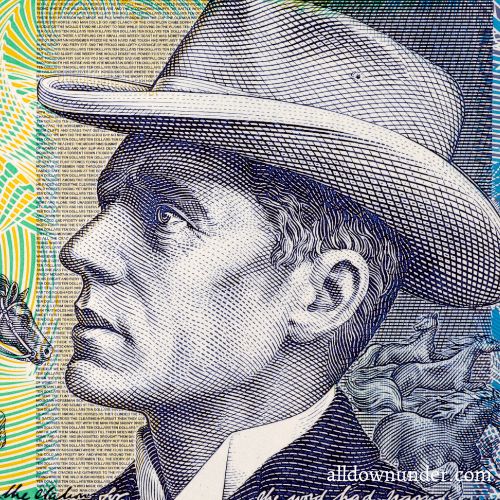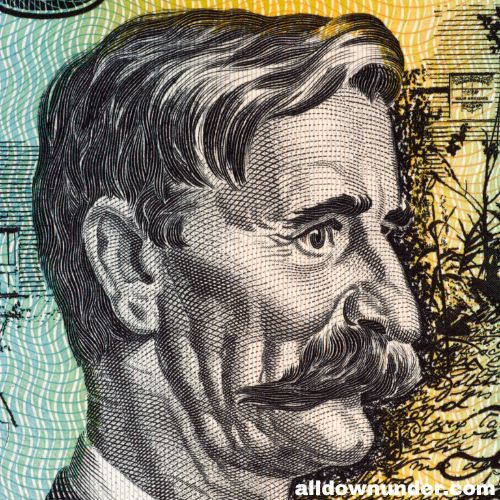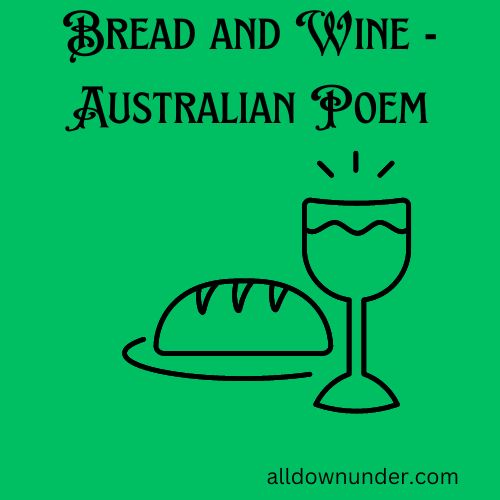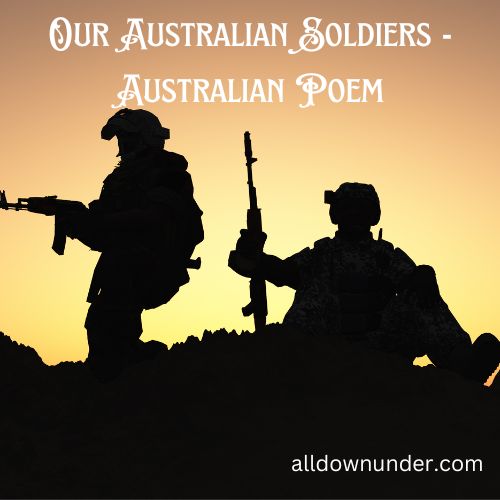A.B. (Banjo) Paterson was an Australian bush poet, journalist and author. He was one of the most popular and prolific Australian writers of the early 20th century (1864 – 1941) and arguably Australia’s greatest poet. Regarded as Australia’s “national poet”, he has been described as “the father of the Australian legend”.
ANDREW BARTON PATERSON IS known to people as Banjo Paterson. The family owned a race horse named Banjo and in his earlier writings for the Bulletin, Paterson used the pseudonym ‘The Banjo’.
Banjo Paterson was born at Narambla Station, New South Wales but considered his home on Illalong Station near Yass, New South Wales as his childhood home. Many experiences during his childhood, where he was in contact with drovers, bushrangers, and teamsters became the basis for his writings including the Australian Bush Myths.
Paterson was the eldest child of Andrew Bogle Paterson, an immigrant to Australia in 1850, and Rose Isabella (nee Barton). Banjo began his education at the small country school in Binalong and later was sent to Sydney (Gladesville) where he lived with his widowed grandmother Emily Mary Barton. After finishing his education in Sydney, he became a clerk in a solicitor’s office. Paterson was admitted as a solicitor in August 1886.
His first published poem was El Mahdi to the Australian Troops. He was only 21 years old when it was published by the Bulletin in February 1885.
Fame greeting Paterson in the publication of his first work, The Man From Snowy River and Other Verses. Published in 1895, it was sold out within a week. For over 100 years, it has consistently outsold any other collection of Australian poetry. It’s popularity today is evident is the success of the movie based on The Man From Snowy River.
Paterson let a very interesting life. His interests included being a crocodile hunter, pearl diver, and amateur sportsman. His interests in politics led him to leave his law studies and become a war correspondent where he covered the Boer War and the Chinese Boxer Rebellion. He continued to travel the world learning first hand about politics.
Abandoning his pursuit of the law, he focused on a career as a journalist. Then while touring Australia in 1902, Paterson met Alice Emily Walker at Tenterfield Station in northern New South Wales. He married her at the station on April 8, 1903.
They made their home in Woolahra, a suburb of Sydney after he was appointed editor of the Sydney Evening News. His two children were born during this period. Looking for a less stressful and confining life, he resigned as editor and bought Coodra, a property in the Yass district. This decision ended in failure and Paterson turned for a short time to wheat farming at Grenfell.
In 1914 Paterson left for England to become a war correspondent during the First World War. Unable to secure a position, he became an ambulance driver instead. He returned to Australia where he enlisted and was commissioned as a lieutenant in the A.I.F. He spent his war years in the Middle East and rose to the rank of Major. Alice joined her husband in 1917 and worked for two years as a volunteer at the hospital in Ismailia. In 1919 the two returned to Australia where he went back to writing. He wrote for Smith’s Weekly, edited the Sydney Sportsman along with a variety of fiction, verse and radio scripts.
Henry Lawson and Banjo debated the aspects of the simple, rustic life of the Australian bush. Their debate in the Bulletin during 1892-1893 came at a time when nationalism was on the rise in Australia. Banjo was often considered a radical of his times for writings such as A Bushman’s Song in which he takes the side of the drovers and shearers against the squatters and absentee landlords.
In 1930 Paterson retired from journalism. The rest of his life was spent writing and enjoying his grandchildren. He was never out of the public eye and in 1939 received the Order of Commander of the British Empire. Paterson’s likeness can be seen on the Australian $10 note (Dame Mary Gilmore is on the reverse).
Andrew Barton Paterson was admitted to hospital just before his 77th birthday and died on February 5, 1941.
Banjo was known not only for the song Waltzing Matilda, but also for his attempt to improve the lives of his fellow Australians by exposing their hardships to the public.
Paterson’s works include:
- 1889 Australia for the Australians (political pamphlet)
- 1895 The Man from Snowy River and Other Verses
- 1902 Rio Grande’s Last Race and Other Verses
- 1905 Waltzing Matilda (music)
- 1905 Old Bush Songs (collection)
- 1906 An Outback Marriage (fiction )
- 1917 Saltbush Bill J.P. and Other Verses
- 1917 Three Elephant Power and Other Stories
- 1923 The Collected Verse of A.B. Paterson
- 1933 The Animals Noah Forgot (children)
- 1934 Happy Dispatches (semi-autobiographical of his travels)
- 1936 The Shearer’s Colt (fiction)



